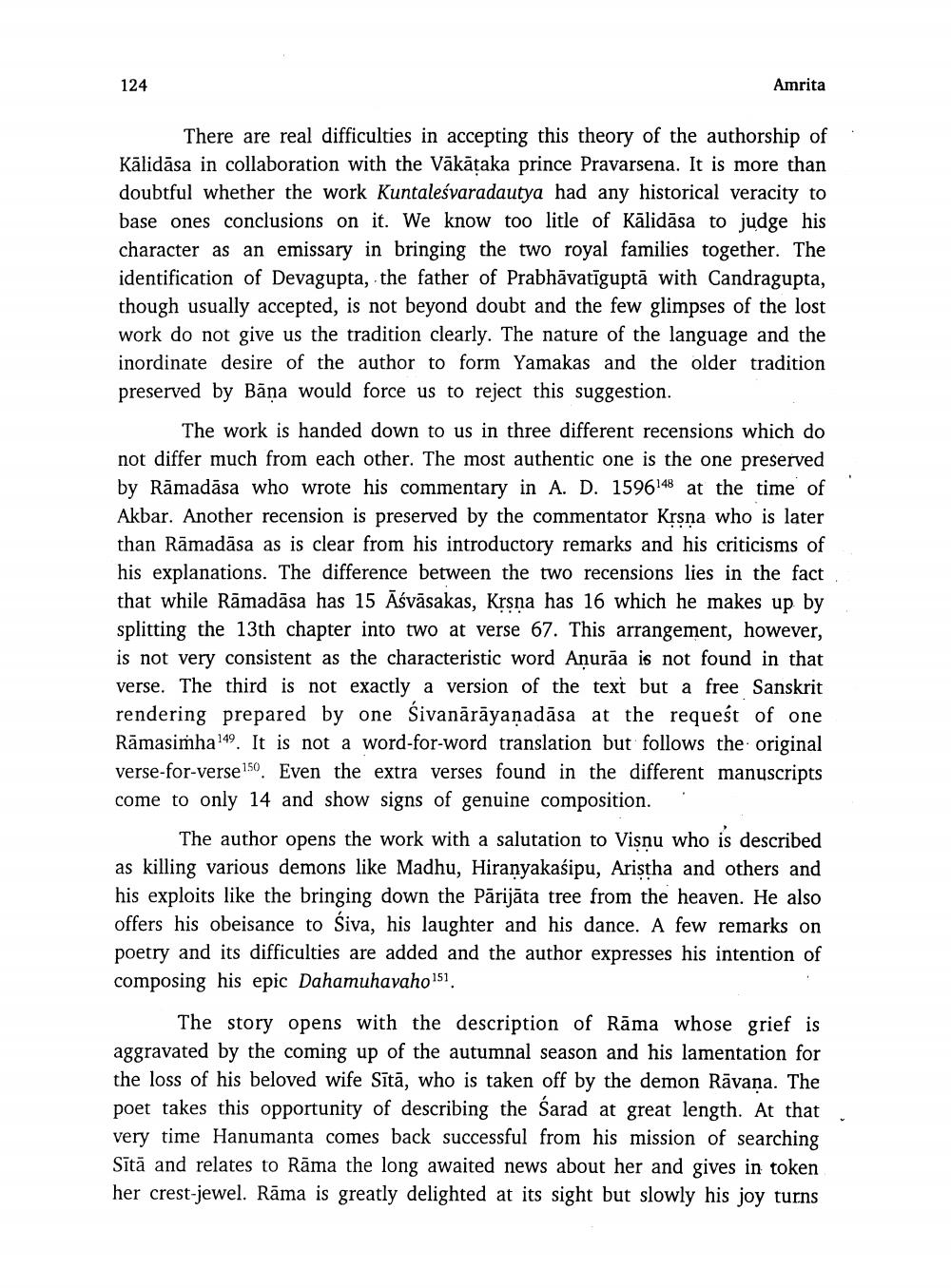________________
124
Amrita
There are real difficulties in accepting this theory of the authorship of Kālidāsa in collaboration with the Vākātaka prince Pravarsena. It is more than doubtful whether the work Kuntalesvaradautya had any historical veracity to base ones conclusions on it. We know too litle of Kālidāsa to judge his character as an emissary in bringing the two royal families together. The identification of Devagupta, the father of Prabhāvatīguptā with Candragupta, though usually accepted, is not beyond doubt and the few glimpses of the lost work do not give us the tradition clearly. The nature of the language and the inordinate desire of the author to form Yamakas and the older tradition preserved by Bāna would force us to reject this suggestion.
The work is handed down to us in three different recensions which do not differ much from each other. The most authentic one is the one preserved by Rāmadāsa who wrote his commentary in A. D. 1596148 at the time of Akbar. Another recension is preserved by the commentator Krsna who is later than Rāmadāsa as is clear from his introductory remarks and his criticisms of his explanations. The difference between the two recensions lies in the fact that while Rāmadāsa has 15 Āśvāsakas, Krsna has 16 which he makes up by splitting the 13th chapter into two at verse 67. This arrangement, however, is not very consistent as the characteristic word Anurāa is not found in that verse. The third is not exactly a version of the text but a free Sanskrit rendering prepared by one Sivanārāyanadāsa at the request of one Rāmasiṁha149. It is not a word-for-word translation but follows the original verse-for-verse150. Even the extra verses found in the different manuscripts come to only 14 and show signs of genuine composition.
The author opens the work with a salutation to Visnu who is described as killing various demons like Madhu, Hiranyakaśipu, Aristha and others and his exploits like the bringing down the Pārijāta tree from the heaven. He also offers his obeisance to siva, his laughter and his dance. A few remarks on poetry and its difficulties are added and the author expresses his intention of composing his epic Dahamuhavaho 151.
The story opens with the description of Rāma whose grief is aggravated by the coming up of the autumnal season and his lamentation for the loss of his beloved wife Sītā, who is taken off by the demon Rāvana. The poet takes this opportunity of describing the Sarad at great length. At that very time Hanumanta comes back successful from his mission of searching Sītā and relates to Rāma the long awaited news about her and gives in token her crest-jewel. Rāma is greatly delighted at its sight but slowly his joy turns




